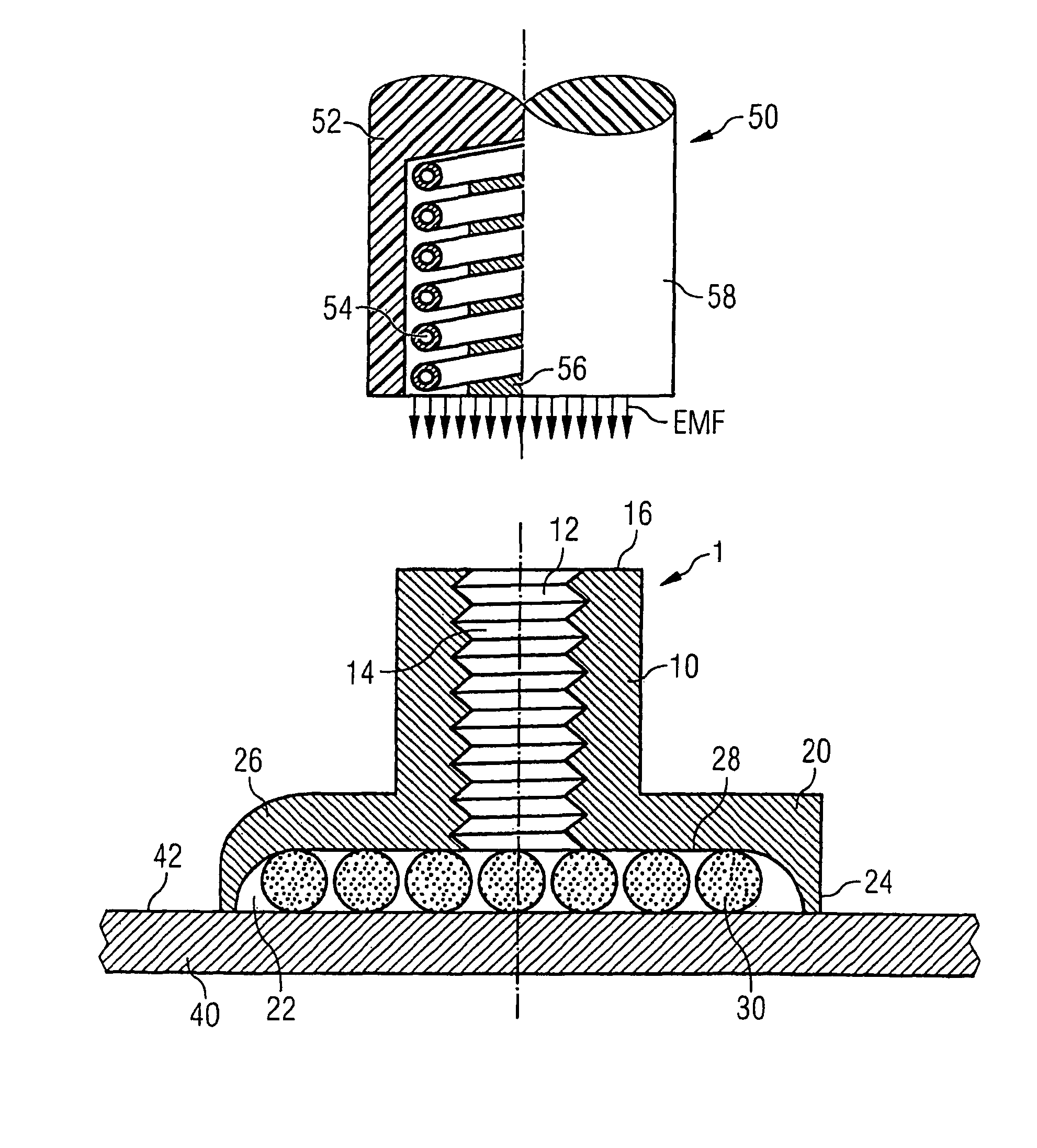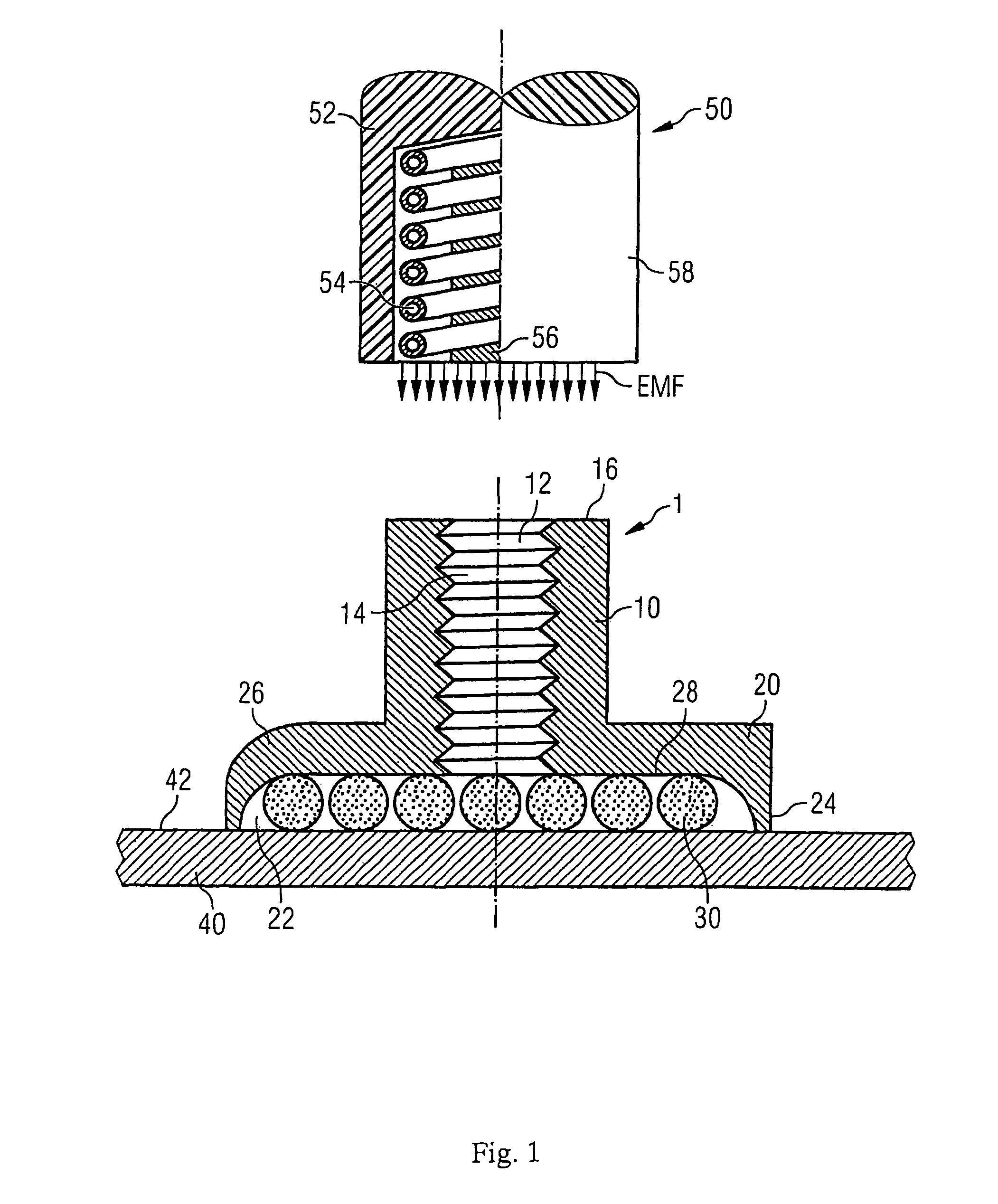Joining element and method for its attachment on a surface
a technology of joining elements and surfaces, applied in the field of joining elements, can solve problems such as temporary deformation of flange-like extension
- Summary
- Abstract
- Description
- Claims
- Application Information
AI Technical Summary
Benefits of technology
Problems solved by technology
Method used
Image
Examples
Embodiment Construction
[0021]The accompanying FIG. 1 shows as an example a thin-walled component 40, to which the joining element 1 is attached. In accordance with different fields of application the component 40 is made of sheet metal, plastic or glass and is used among other things in mobile telephones, computers, motor vehicles and the like. In spite of the attachment of the joining element 1 on the surface 42 of the component 40 the outward appearance of the component 40 is not disturbed. The joining element 1 is namely connected to the component 40 in such a way that no openings, boreholes, material accumulations, dents, sink marks, color changes in the material, marks or the like occur or are necessary.
[0022]As one can see with the help of FIG. 1, the attachment element 1 has an inverted T-shaped form which is formed by a sleeve-shaped accommodation part 10 and by a flange-like extension 20. The accommodation part 10 and the extension 20 are integrally connected to each other or are connected in ano...
PUM
| Property | Measurement | Unit |
|---|---|---|
| stress concentrations | aaaaa | aaaaa |
| time | aaaaa | aaaaa |
| temperature | aaaaa | aaaaa |
Abstract
Description
Claims
Application Information
 Login to View More
Login to View More - R&D
- Intellectual Property
- Life Sciences
- Materials
- Tech Scout
- Unparalleled Data Quality
- Higher Quality Content
- 60% Fewer Hallucinations
Browse by: Latest US Patents, China's latest patents, Technical Efficacy Thesaurus, Application Domain, Technology Topic, Popular Technical Reports.
© 2025 PatSnap. All rights reserved.Legal|Privacy policy|Modern Slavery Act Transparency Statement|Sitemap|About US| Contact US: help@patsnap.com



